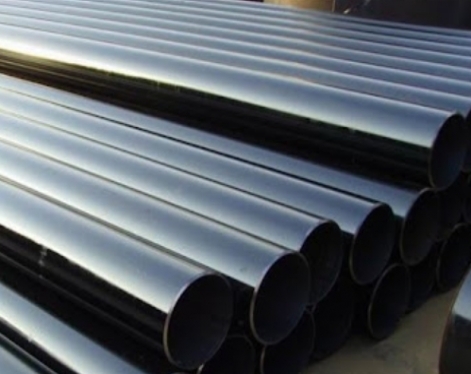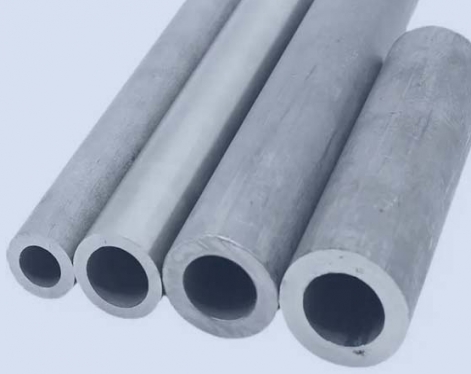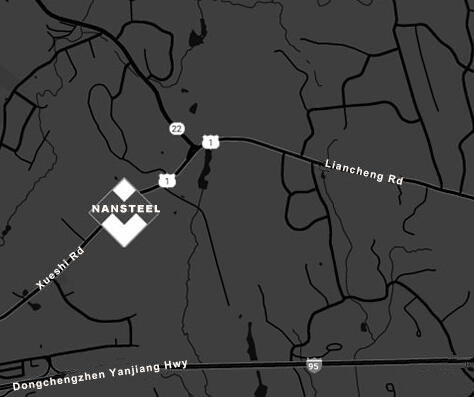In the industrial field, pipes are key components for transporting various fluids and gases and are widely used in many industries such as oil, natural gas, construction, and machinery manufacturing. Different types of pipes play their own unique roles in practical applications due to their manufacturing processes, structural characteristics, and performance differences. Among them, ERW pipes, DOM pipes and seamless pipes are more common types of pipes, and they have obvious differences in production processes, performance and applicable scenarios. Understanding these differences will help users make more appropriate pipe selections in different engineering projects, ensuring the quality, safety and economic benefits of the project. Next, we will analyze the differences between these three types of pipes in depth.
ERW pipe: the strength of electric resistance welding
ERW pipe, or Electric Resistance Welding, is made by rolling low-carbon structural steel or low-alloy structural steel strip into a pipe blank at a certain spiral angle (called forming angle), and then welding the pipe seams. Its production process integrates advanced high-frequency resistance welding technology, using the skin effect and proximity effect of high-frequency current to quickly heat the edge of the steel strip to a molten state, and achieve welding under pressure. The weld is formed by melting the base material, which makes its mechanical strength better than that of ordinary welded pipes.
The advantages of ERW pipes are obvious, including high production efficiency, low cost, and better control of dimensional accuracy. Moreover, its weld is relatively narrow and even difficult to detect after treatment, which not only improves the appearance quality of the pipeline, but also reduces the resistance during fluid transportation. In practical applications, ERW pipes are commonly found in oil, natural gas and other transportation pipelines, and also play an important role in building structures, machinery manufacturing and other fields.

DOM pipe: A Precision Representation of the Drawing Mandrel
DOM pipe, or Draw Over Mandrel pipe, is a cold drawn 1020/1026 electric resistance welded pipe that has all burrs removed prior to cold drawing. Its production process is relatively unique. It usually uses fully annealed thick-walled ERW tubes and uses a mandrel to draw them through a cold drawing process. This processing method gives DOM pipes extremely high dimensional accuracy, with very tight tolerances on the outside and inside diameters, and excellent surface quality, with smooth inner and outer surfaces and almost no defects.
With high precision and good surface quality, DOM pipes are used in areas where high precision is required. In automobile manufacturing, it is often used to manufacture key components such as drive shafts and hydraulic cylinders to ensure the high performance and stability of the car; In the field of mechanical processing, DOM pipes are also widely used in the manufacture of precision shafts, cylinder blocks, etc. to meet the needs of various complex mechanical structures.
Seamless pipe: an all-rounder without welds
Seamless pipe is a rolled steel pipe without welds. Its manufacturing process is relatively complicated and usually adopts hot rolling or cold processing. The biggest feature of seamless pipes is that they have no welds, which makes them excellent in strength and pressure bearing capacity, and can withstand higher pressure and harsh working environments. At the same time, the material of seamless pipes is uniform, with good toughness and fatigue resistance. In the petroleum and chemical industries, seamless pipes are used to transport various high-temperature, high-pressure, flammable and explosive media; in the aerospace field, seamless pipes are also used to manufacture pipeline systems and structural components of aircraft engines to ensure flight safety.
Three-tube comparison: comprehensive analysis of differences
1. Manufacturing process: ERW pipes are made by high-frequency resistance welding to weld steel strips; DOM pipes are made by cold drawing and mandrel drawing on the basis of ERW pipes to improve precision; seamless pipes are gradually processed from solid tube billets into tubes through hot rolling or cold working.
2. Appearance: The ERW pipe has an obvious weld, which is the most intuitive difference between it and the other two pipes; the DOM pipe and seamless pipe have no obvious weld on the surface, and the appearance is smoother. Among them, the surface quality of the DOM pipe is particularly excellent, and almost no flaws can be seen.
3. Performance: In terms of pressure bearing capacity, seamless pipes have high overall strength and the strongest pressure bearing capacity due to the lack of welds; DOM pipes have high precision and excellent performance; the welds of ERW pipes are relatively weak points and the pressure bearing capacity is relatively weak, but through process improvements, it can also meet many conventional needs. In terms of corrosion resistance, the three types of pipes can be improved through surface treatment to improve corrosion resistance, but under the same conditions, seamless pipes and DOM pipes may perform better in some special corrosive environments due to their more uniform structure.
4. Application scenarios: ERW pipes are often used in cost-sensitive fields such as oil and natural gas pipelines and building structures; DOM pipes are mainly used in industries with high precision requirements such as automobile manufacturing and mechanical processing due to their high precision; seamless pipes play a key role in fields such as petroleum, chemical industry, aerospace, etc. that have strict requirements on pipe performance.
5. Price: Generally speaking, ERW pipes have high production efficiency and low cost, and are relatively affordable; DOM pipes have high prices due to their complex processing technology and high precision requirements; seamless pipes have complex manufacturing processes, long production cycles, and high requirements for raw materials, so their prices are usually higher.
Read more: Advantages of ERW Pipes in the Construction Field
ERW pipe: the strength of electric resistance welding
ERW pipe, or Electric Resistance Welding, is made by rolling low-carbon structural steel or low-alloy structural steel strip into a pipe blank at a certain spiral angle (called forming angle), and then welding the pipe seams. Its production process integrates advanced high-frequency resistance welding technology, using the skin effect and proximity effect of high-frequency current to quickly heat the edge of the steel strip to a molten state, and achieve welding under pressure. The weld is formed by melting the base material, which makes its mechanical strength better than that of ordinary welded pipes.
The advantages of ERW pipes are obvious, including high production efficiency, low cost, and better control of dimensional accuracy. Moreover, its weld is relatively narrow and even difficult to detect after treatment, which not only improves the appearance quality of the pipeline, but also reduces the resistance during fluid transportation. In practical applications, ERW pipes are commonly found in oil, natural gas and other transportation pipelines, and also play an important role in building structures, machinery manufacturing and other fields.

DOM pipe: A Precision Representation of the Drawing Mandrel
DOM pipe, or Draw Over Mandrel pipe, is a cold drawn 1020/1026 electric resistance welded pipe that has all burrs removed prior to cold drawing. Its production process is relatively unique. It usually uses fully annealed thick-walled ERW tubes and uses a mandrel to draw them through a cold drawing process. This processing method gives DOM pipes extremely high dimensional accuracy, with very tight tolerances on the outside and inside diameters, and excellent surface quality, with smooth inner and outer surfaces and almost no defects.
With high precision and good surface quality, DOM pipes are used in areas where high precision is required. In automobile manufacturing, it is often used to manufacture key components such as drive shafts and hydraulic cylinders to ensure the high performance and stability of the car; In the field of mechanical processing, DOM pipes are also widely used in the manufacture of precision shafts, cylinder blocks, etc. to meet the needs of various complex mechanical structures.
Seamless pipe: an all-rounder without welds
Seamless pipe is a rolled steel pipe without welds. Its manufacturing process is relatively complicated and usually adopts hot rolling or cold processing. The biggest feature of seamless pipes is that they have no welds, which makes them excellent in strength and pressure bearing capacity, and can withstand higher pressure and harsh working environments. At the same time, the material of seamless pipes is uniform, with good toughness and fatigue resistance. In the petroleum and chemical industries, seamless pipes are used to transport various high-temperature, high-pressure, flammable and explosive media; in the aerospace field, seamless pipes are also used to manufacture pipeline systems and structural components of aircraft engines to ensure flight safety.
Three-tube comparison: comprehensive analysis of differences
1. Manufacturing process: ERW pipes are made by high-frequency resistance welding to weld steel strips; DOM pipes are made by cold drawing and mandrel drawing on the basis of ERW pipes to improve precision; seamless pipes are gradually processed from solid tube billets into tubes through hot rolling or cold working.
2. Appearance: The ERW pipe has an obvious weld, which is the most intuitive difference between it and the other two pipes; the DOM pipe and seamless pipe have no obvious weld on the surface, and the appearance is smoother. Among them, the surface quality of the DOM pipe is particularly excellent, and almost no flaws can be seen.
3. Performance: In terms of pressure bearing capacity, seamless pipes have high overall strength and the strongest pressure bearing capacity due to the lack of welds; DOM pipes have high precision and excellent performance; the welds of ERW pipes are relatively weak points and the pressure bearing capacity is relatively weak, but through process improvements, it can also meet many conventional needs. In terms of corrosion resistance, the three types of pipes can be improved through surface treatment to improve corrosion resistance, but under the same conditions, seamless pipes and DOM pipes may perform better in some special corrosive environments due to their more uniform structure.
4. Application scenarios: ERW pipes are often used in cost-sensitive fields such as oil and natural gas pipelines and building structures; DOM pipes are mainly used in industries with high precision requirements such as automobile manufacturing and mechanical processing due to their high precision; seamless pipes play a key role in fields such as petroleum, chemical industry, aerospace, etc. that have strict requirements on pipe performance.
5. Price: Generally speaking, ERW pipes have high production efficiency and low cost, and are relatively affordable; DOM pipes have high prices due to their complex processing technology and high precision requirements; seamless pipes have complex manufacturing processes, long production cycles, and high requirements for raw materials, so their prices are usually higher.
Read more: Advantages of ERW Pipes in the Construction Field









